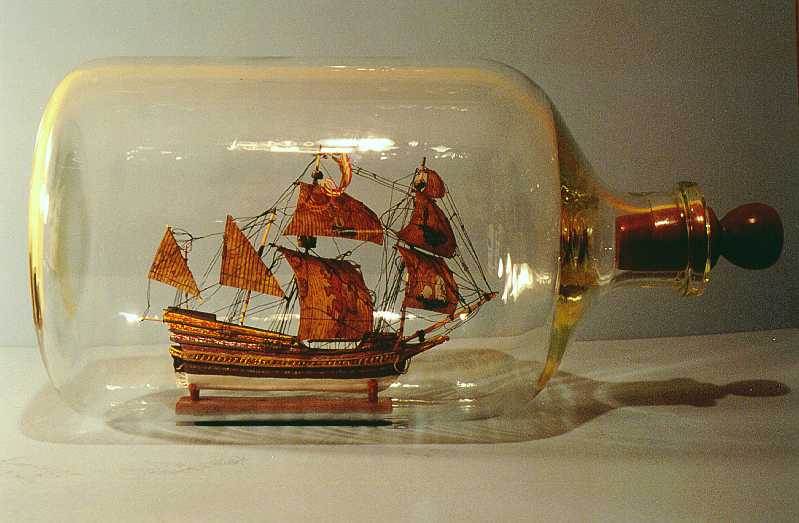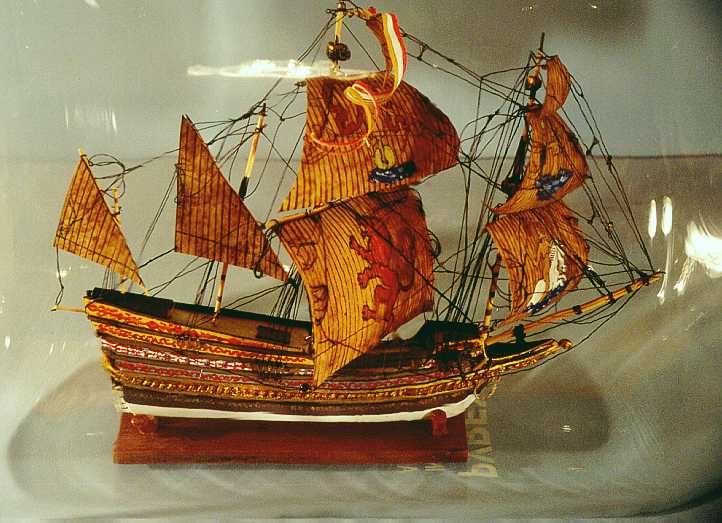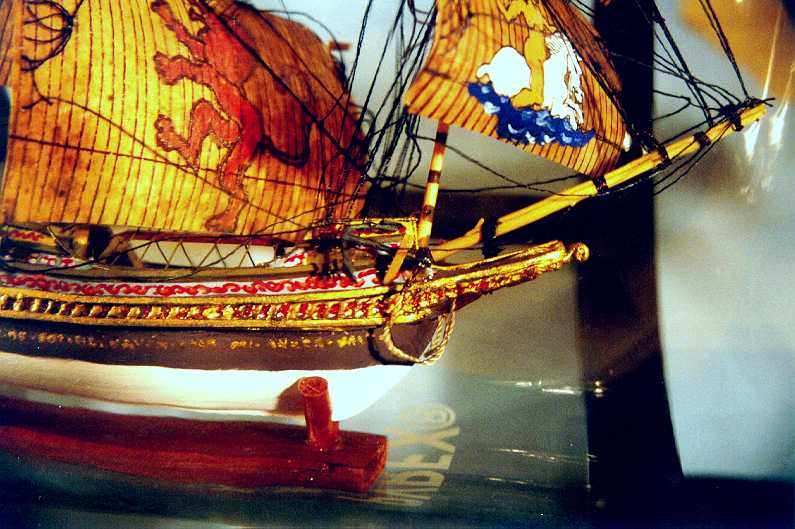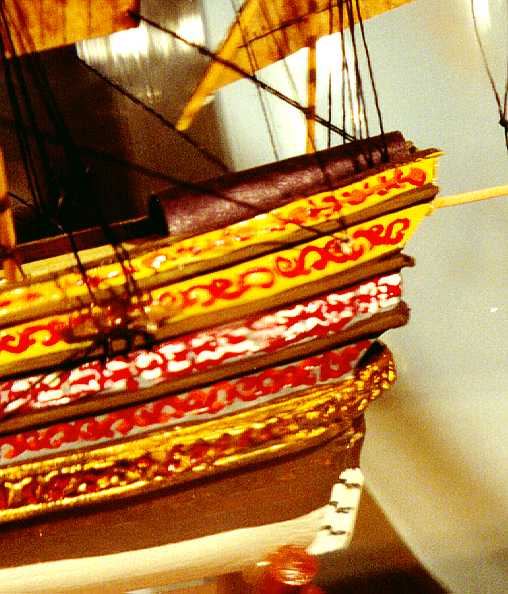
Superdetailing a XVI Century Flemish Galleon:

The Ship:
About 1590, Holland obtained freedom from Spanish rule, which was exerted rigorously on the colonies, mainly for commercial/economic reasons.
Flandes remained loyal to he King Phillip II , and some flemish vassals presented a 'state of the Art' model of a ship of that time (1593) marvelously elaborated. The model is now exhibited at the Museo Real de Madrid. The actual model bases on a speculative reconstruction suggested by the swedish naval specialist Björn Landström, who worked on the proportions as given by Mathew Baker to retrace the hull.
The original model doesn't provide a valid reference in the case of the rigging, since it seems it was altered or repaired improperly. So I worked on the masts and rigging, missing in Mr Landström's work, basing on contemporary drawings or engravings (one from W.Baerentson) and also sketches from M.Baker.
The ship possesed an elegantly curved gallery, and the sides , between gun decks, are carved, gilded, or otherwise beautifully painted. A painted legend at the side reads "I sail, with the help of the North wind and the waves to good harbour, and there I lay my Anchor". (This is my best translation of : " IK VARRE MET NEINUS EN BOREAS HULPENGHE TOT DIE HAVEN DAER MI ANKER VALT" )
Perhaps the gift was an omen of that dreamed freedom, that the flemish people so much longed for, and were finally able to obtain afterwards.
The Model:

In this broadside view, we can see the ship in all its grandeur. Scaled at roughly 1:400, If you are looking with an 800x600 resolution, the above picture will appear actual size.The hull had to be split in three pieces to pass through the neck. The model was set with folding masts. The rigging accurately modeled after Baerentson's engraving up to the small crowfeet of braces on stays, was adapted for pulling. Nevertheless, main sail was added and rigged afterwards, and so was the aftermost mizzen, completely rigged and added from the outside.

Please note the gilded carving, detailed beakhead, fully detailed anchors and painted phrase alongside hull. Bowsprit has gammoning, stay collars and cleats. On deck structure for the boarding net. Note painted arabesques on the broadside friezes.

The sails have been cut to scale and painted with the figures found on Baerentson's engraving. Since main sail was furled on the drawing, the 'Lion Rampant' was taken from the one depicted on one of the flags (here not visible, see previous photo). This is perhaps the most argueable aspect of the model, since the sails' iconography is taken from a netherlandish ship of 1594. Although the side legend is written in old flemish (common roots with hollandish) which leads to the conclusion of its netherlandish/flemish origin (Vlaandern) whether the original ship could have had such painted sails or not remains a mistery. Basing on the exposed reasons, and taking into account the vividly painted hull and uses of the time, I decided to use decorated sails. Note the rigging details such as topping lifts, martnets, bowlines and tacks. Back side of the sails have the clew garnets (not visible in this photo)

(Sorry for the focus) Please note the painted arabesques, The planking reinforcement strips marking each frieze, the carved poop gallery, the poop deck, the rudder.
Bibliog. The Ship - Björn Landström. Historische Schiffsmodelle. W. zu Mondfeld.
Return to Eddy's Thimble Pier Top page
Wish to take a look at the SIB Gallery?
(c) 2000 Eduardo Raffaelli. Buenos Aires . Argentina